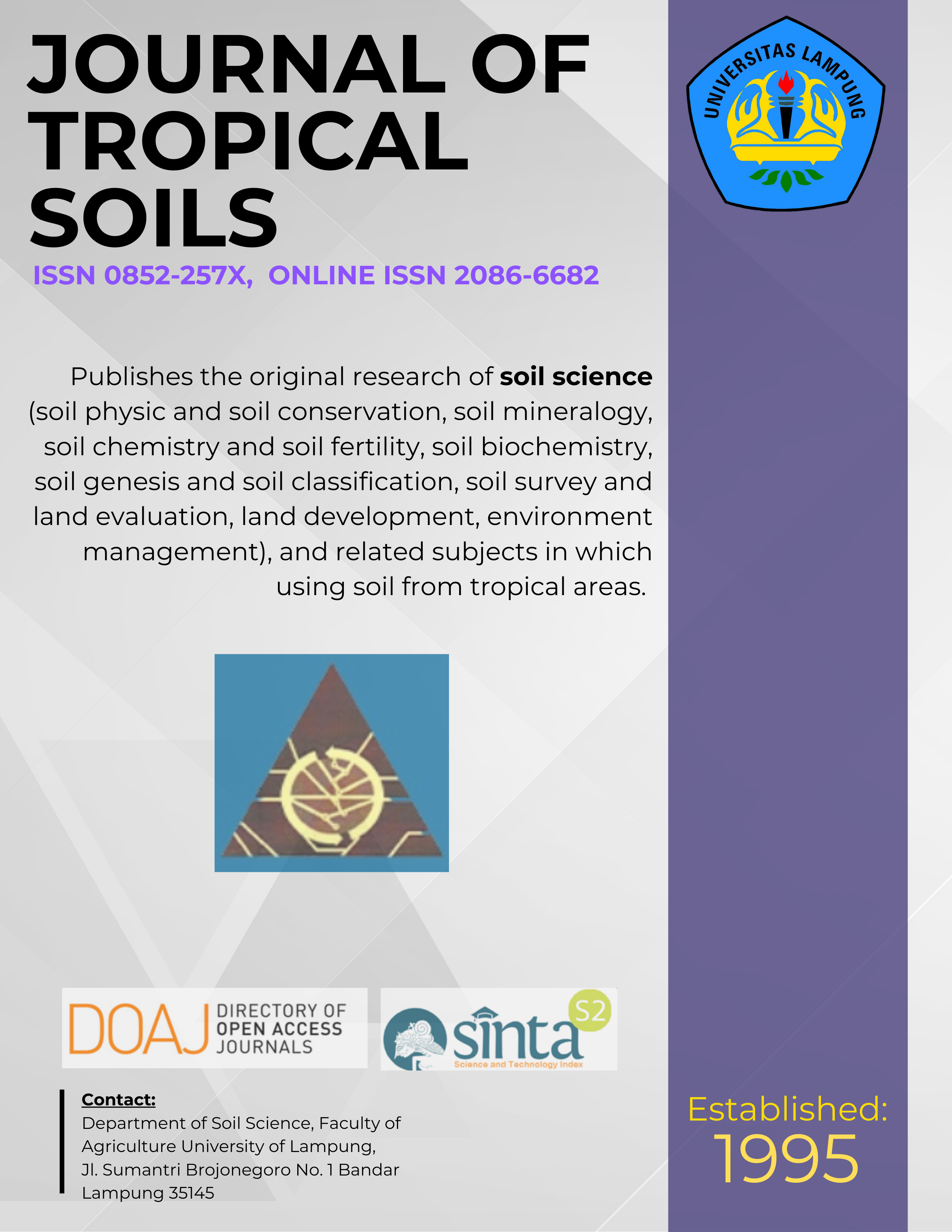Increasing of “Keprok†Citrus Production in the Andisols of Karo by a Local Compound Fertilizers
Main Article Content
Abstract
Increasing of “Keprok†Citrus Production in the Andisols of Karo by a Local Compound Fertilizers (E Tuherkih and Sukristiyonubowo): The improvement of “keprok†citrus production in term of quantity and quality depends on soil properties and fertilization.  Many factors affected efectiveness and efficiency of fertilizers i.e. soil, climate, plant species, growth period of plant, plant productivity, and type and rate of fertilizers. Study on the effect of SUMUT-1 and SUMUT-2 compound fertilizers on keprok citrus production was carried out in Sukadame Village, Tanah Karo District from January to December 2008. The purpose of the research were to evaluate the effectiveness of new compound fertilizer SUMUT-1 and SUMUT-2 on leaf nutrient content, quality and quantity production of “keprok†citrus as well as to determine the optimum rate of SUMUT-1 dan SUMUT-2. Ten treatments were tested and arranged into a randomized completely block design with three replications. The fertilizer application rates of SUMUT 1 and SUMUT 2 were 400, 550, 700, dan 850 kg-1ha-1year-1, meanwhile dosages of fertilizer recomended application of NPK originated from single fertiliser namely urea, SP-36, and KCl and farmer practice were used as control.  The results indicated that application of SUMUT-1 and SUMUT-2 were more effective than fertilizers coming from single NPK fertilizer with RAE value >100%. Furthermore, SUMUT-1 was better than SUMUT-2 in improving N, P, K contents in citrus leaf. The optimum application rate of SUMUT-1 was 700 kg-1ha-1year-1 reaching the citrus production of 36,29 Mg-1  ha-1 year-1 with fruit grade of about  51% AB and 49% CD. These matched with the SPO (Standard Procedure Operation) for citrus of about 20 Mg-1 ha-1 year-1.
Downloads
Article Details
Section
License for Authors
Authors who publish with this journal agree to the following terms:
- Authors retain copyright and grant the journal right of first publication with the work simultaneously licensed under a Creative Commons Attribution License that allows others to share the work with an acknowledgement of the work's authorship and initial publication in this journal.
- Authors are able to enter into separate, additional contractual arrangements for the non-exclusive distribution of the journal's published version of the work (e.g., post it to an institutional repository or publish it in a book), with an acknowledgement of its initial publication in this journal.
- Authors are permitted and encouraged to post their work online (e.g., in institutional repositories or on their website) prior to and during the submission process, as it can lead to productive exchanges, as well as earlier and greater citation of published work (See The Effect of Open Access).
License for Regular Users
Other regular users who want to cite, distribute, remix, tweak, and build upon author’s works, even for commercial purposes, should acknowledge the work’s authorship and initial publication in this journal, licensed under a Creative Commons Attribution License.

